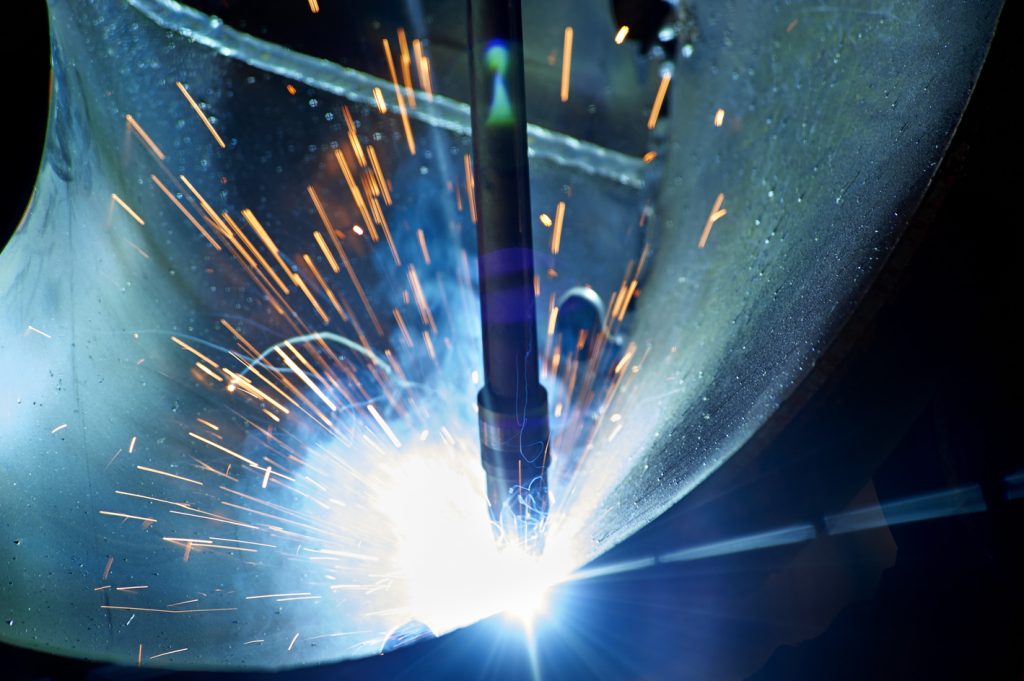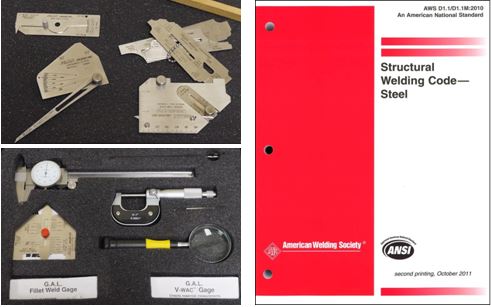Recognizing the Specifications for Welding Inspection Gilbert Arizona: A Total Overview
Recognizing the Specifications for Welding Inspection Gilbert Arizona: A Total Overview
Blog Article
A Comprehensive Guide to Welding Assessment: Recognizing Criteria, Techniques, and Best Practices for Quality Assurance

Welding evaluation plays an essential role in ensuring the structural stability and security of bonded parts, necessitating a complete understanding of market standards such as those established by AWS and ASME. As we discover these crucial components, it becomes evident that the effects of welding evaluation extend far past conformity, inviting a closer examination of exactly how these processes form sector requirements and methods.
Value of Welding Inspection
Welding evaluation plays a critical role in guaranteeing the honesty and security of bonded frameworks. It is a vital procedure that confirms that welds adapt predefined requirements, which is vital in various markets, including building, auto, and aerospace. By carrying out thorough examinations, prospective problems such as cracks, insufficient fusion, and porosity can be recognized early, stopping catastrophic failures that can result in mishaps or costly fixings.
The importance of welding inspection extends past simple conformity with policies; it also promotes depend on with stakeholders. Clients and regulative bodies expect assurance that the frameworks they rely upon are constructed to withstand functional stresses. Efficient welding assessment practices add to long-term toughness and performance of the structures, inevitably leading to minimized maintenance prices.
Furthermore, welding evaluation promotes a society of top quality within organizations, urging adherence to ideal methods and constant improvement. By integrating evaluation procedures into the welding process, companies can improve their credibility and establish themselves as leaders in quality control. In final thought, the value of welding inspection exists in its capability to secure lives, ensure structural integrity, and support industry requirements, making it a crucial element of welding procedures.
Secret Industry Requirements
Ensuring conformity with vital market requirements is important for keeping the quality and safety and security of bonded frameworks. Numerous companies establish these standards to advertise ideal practices in welding and assessment. Amongst the most acknowledged are the American Welding Society (AWS) and the American Society of Mechanical Designers (ASME), which give in-depth standards and requirements for welding processes and inspection criteria.
AWS standards, such as AWS D1.1 for structural welding, outline needs for materials, design, and screening to guarantee the stability of welds. ASME codes, consisting of ASME Area IX, regulate the certification of welders and welding treatments, ensuring constant high quality in industrial applications. Worldwide, the ISO 3834 conventional emphasizes top quality demands for blend welding, providing a structure for organizations to demonstrate conformity with global finest methods.
Compliance with these criteria not only improves the dependability of welded structures yet also mitigates threats associated with architectural failings. Adherence to sector criteria is often a requirement for regulative authorizations and can significantly affect job specs. Inevitably, understanding and applying these key requirements are important for reliable welding examination and quality control.
Inspection Techniques Introduction
Efficient welding inspection depends on a range of methods created to analyze the quality and honesty of welds. These techniques can be broadly classified into non-destructive and damaging testing (NDT) methods. Non-destructive testing techniques, which are widely liked in the sector, enable the examination of welds without endangering the integrity of the product.
Amongst the most commonly used NDT methods are visual inspection, ultrasonic screening, radiographic testing, and magnetic particle testing. Visual evaluation is usually the very first step in the analysis procedure, enabling assessors to identify surface area flaws and assess weld grain profiles.
Each method has its own advantages and restrictions, making it necessary for examiners to choose the most appropriate approach based on the certain needs of the job, the materials involved, and the criticality of the welds being inspected. This cautious option ensures detailed analyses and maintains safety and high quality standards in welding operations.

Usual Problems and Their Ramifications
A detailed understanding of common flaws in welds is essential for maintaining architectural stability article source and safety in welded building and constructions. Welding flaws can substantially jeopardize the mechanical homes of the joint, bring about failures that can threaten both workers and devices.
Typical defects consist of porosity, which materializes as small gas pockets entraped in the weld metal, weakening the overall structure. Splitting is one more widespread issue, typically resulting from rapid cooling or incorrect joint design, bring about tension concentrations that can cause disastrous failings. Insufficient blend happens when the weld steel stops working to appropriately bond with the base product, developing powerlessness that may lead to separation under tons.
Other noteworthy problems consist of undercutting, where the weld bead wears down the base steel, and slag inclusions, which can hinder the weld's strength. Each of these problems has specific implications; for instance, porosity can reduce ductility, while fracturing straight influences tensile toughness. Identifying and recognizing these problems throughout assessment is important for making certain and implementing restorative measures compliance with sector requirements, eventually guarding the architectural integrity of welded assemblies.
Finest Practices for Quality Guarantee
Carrying out finest techniques for top quality guarantee in welding processes is crucial for attaining optimal outcomes and minimizing problems. One crucial technique is the facility of clear welding treatments that abide by industry standards and specs. These procedures need to consist of in-depth guidelines concerning product selection, joint preparation, and welding methods to ensure consistency and high quality.
Regular training and certification of welding employees are also crucial. Proficient welders who understand the value of top quality guarantee are much more likely to produce audio welds. Additionally, applying a durable inspection program, consisting of both non-destructive and aesthetic testing (NDT), can assist identify flaws early in the process, permitting for prompt corrective actions.
Paperwork plays an essential More Bonuses role in quality control. Keeping precise records of welding repair services, criteria, and inspections guarantees traceability and responsibility. Utilizing sophisticated modern technologies such as automated welding equipments can boost precision and reduce the potential for human mistake.
Last but not least, fostering a society of quality within the organization encourages employees to focus on quality in their job. By sticking to these finest practices, companies can improve the honesty of their welding procedures, inevitably leading to improved item high quality and reduced costs connected with rework and repair services.

Final Thought
Finally, welding evaluation plays a vital role in ensuring the stability and security of bonded structures. Adherence to key sector criteria, such as those established by AWS and ASME, is necessary for reliable quality control. Utilizing numerous inspection strategies allows for the recognition of common issues, thereby minimizing possible risks. By executing ideal methods, companies can boost integrity, decrease upkeep costs, and cultivate count on amongst customers, inevitably adding to successful welding procedures.
Additionally, welding evaluation promotes a culture of quality within organizations, motivating adherence to finest methods and constant renovation. In conclusion, the significance of welding assessment exists in its capacity to safeguard lives, ensure structural integrity, and copyright industry standards, making it a crucial facet of welding procedures.
Among the most acknowledged important source are the American Welding Culture (AWS) and the American Culture of Mechanical Designers (ASME), which give detailed guidelines and specifications for welding processes and evaluation criteria.
Eventually, understanding and carrying out these crucial standards are vital for effective welding inspection and top quality assurance.
Reliable welding evaluation depends on a variety of strategies created to examine the high quality and stability of welds. - Welding Inspection Gilbert Arizona
Report this page